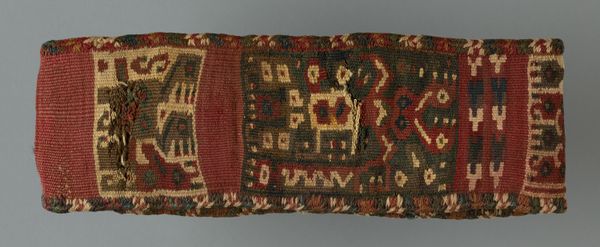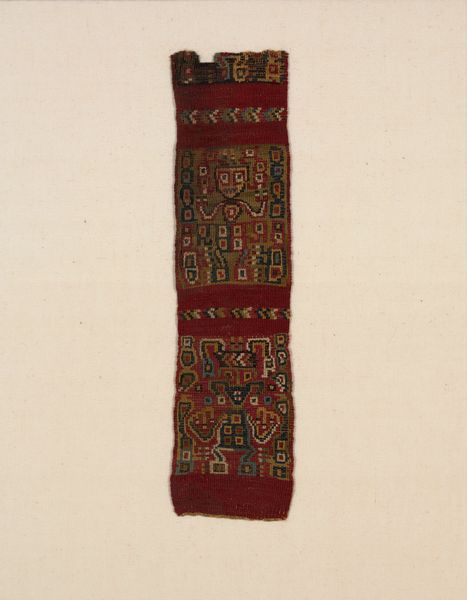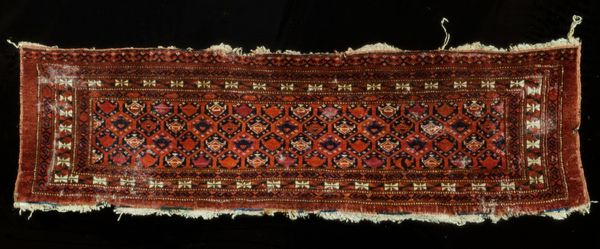
fibre-art, weaving, textile
#
fibre-art
#
weaving
#
textile
#
geometric pattern
#
geometric
#
indigenous-americas
Dimensions: 53.3 × 4.5 cm (21 × 1 3/4 in.)
Copyright: Public Domain
Curator: This intriguing piece is a woven headband, dated sometime between 600 and 900 AD, crafted by the Wari culture. It's currently housed here at the Art Institute of Chicago. Editor: The immediate feeling is quite tactile and earthy, even a bit muted, although some sections appear vibrant, almost ceremonial in presentation. I love the use of geometric forms that invite a range of interpretations. Curator: Indeed. The Wari were master weavers, and textiles held significant social and political weight within their society. Examining examples such as this gives insight into cultural systems within this region. These textiles were more than mere decoration; they were vital indicators of status and wealth. Editor: And power, certainly. Textiles can carry symbolic language, and the repeated motifs, like the spirals, could represent beliefs, social hierarchies, or historical narratives central to Wari identity. What can you share about what the shapes suggest to viewers now, outside its originating cultural context? Curator: Without precise textual accounts from the Wari civilization itself, decoding the exact symbolic significance of each motif is tricky. The spiral, for example, is prevalent across many ancient cultures. It is commonly interpreted as an emblem for the cycle of life, death, and rebirth. I'd assume that these textiles became vehicles to communicate complex ideas within Wari society and perhaps also demonstrated social standing to the broader population. Editor: Yes. These vibrant details can serve as focal points for self-expression and belonging, depending on one's relation to cultural shifts. When a piece like this appears in a museum setting, does it lose its intended significance and purpose or simply gain an entirely different interpretive context? How has the act of preservation complicated the narratives surrounding this artifact? Curator: Preservation gives extended longevity to material culture, allowing later audiences to examine this piece and generate contemporary scholarship that is continuously contextualizing it with fresh narratives. Without its modern relocation here, it wouldn't necessarily retain historical preservation, as many artifacts throughout the global south face colonial dispossession and looting. Editor: It makes me think about the journey and the act of curation: it's always about telling particular stories in the service of wider social structures. Ultimately, this vibrant fragment compels us to remember that textiles held significant roles. Curator: Precisely. In many ways, it’s about expanding our understanding of history beyond the written word, decentering existing cultural assumptions in scholarship.
Comments
No comments
Be the first to comment and join the conversation on the ultimate creative platform.













